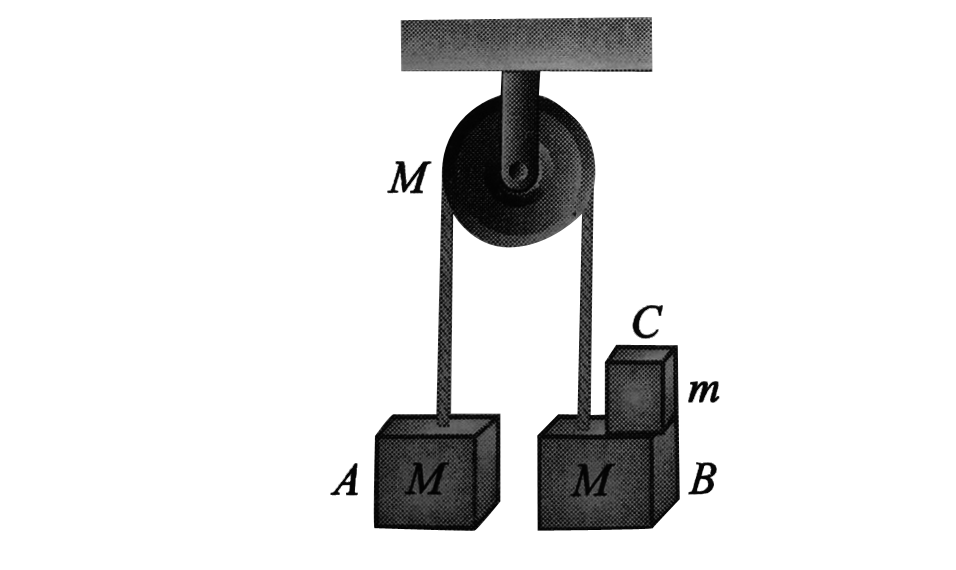
For the following system shown assume that pulley is frictionless, string is massless (m remains on M),
Q. The acceleration of the block A is
mg2M+m
2mg2M+m
mgM+2m
MgM+2m
The correct Answer is:A
free body diagram C' block
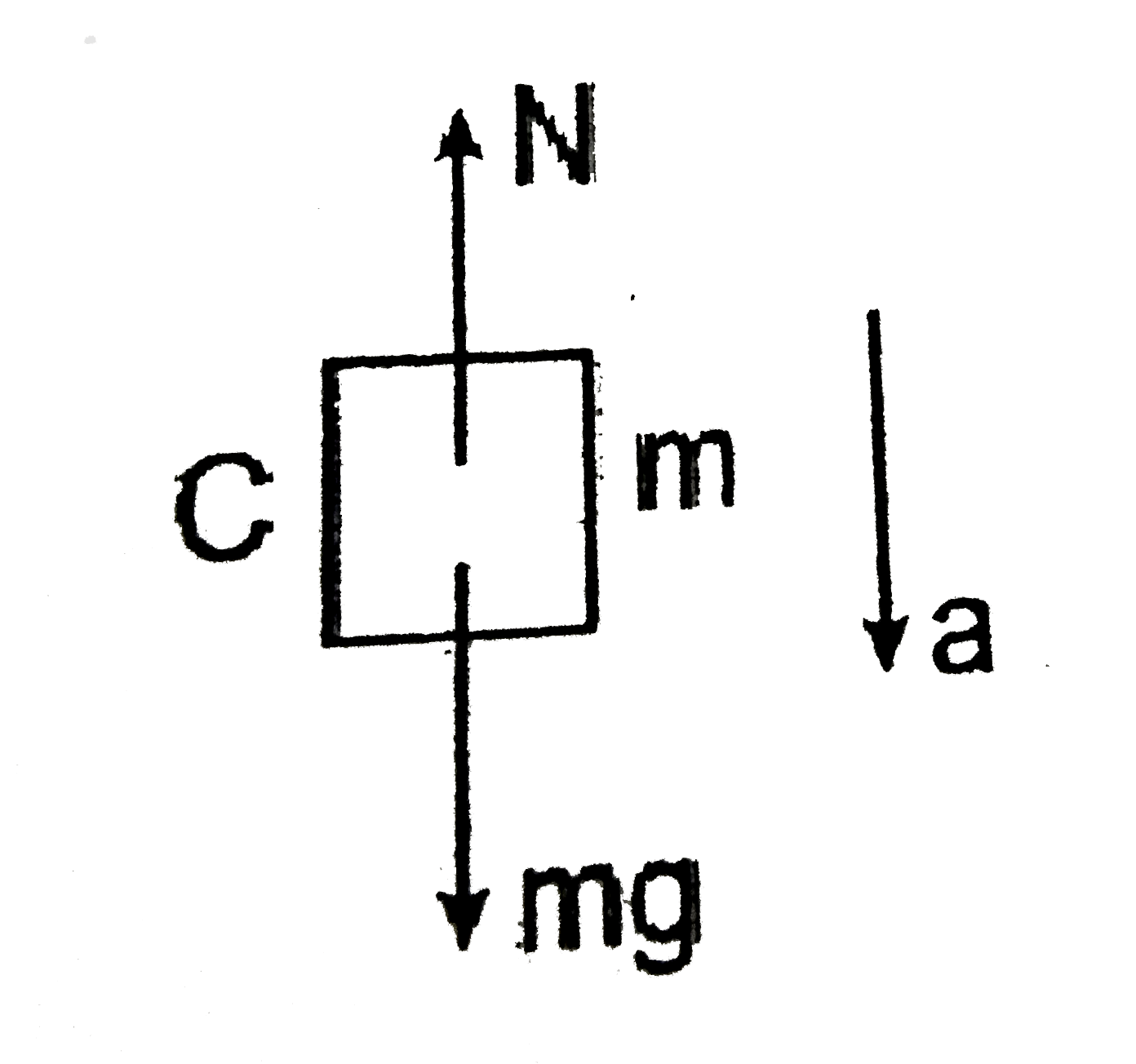
mg−N=ma
∴N=m(g−mg2M+m)N=2Mmg2M+m
Similar Questions
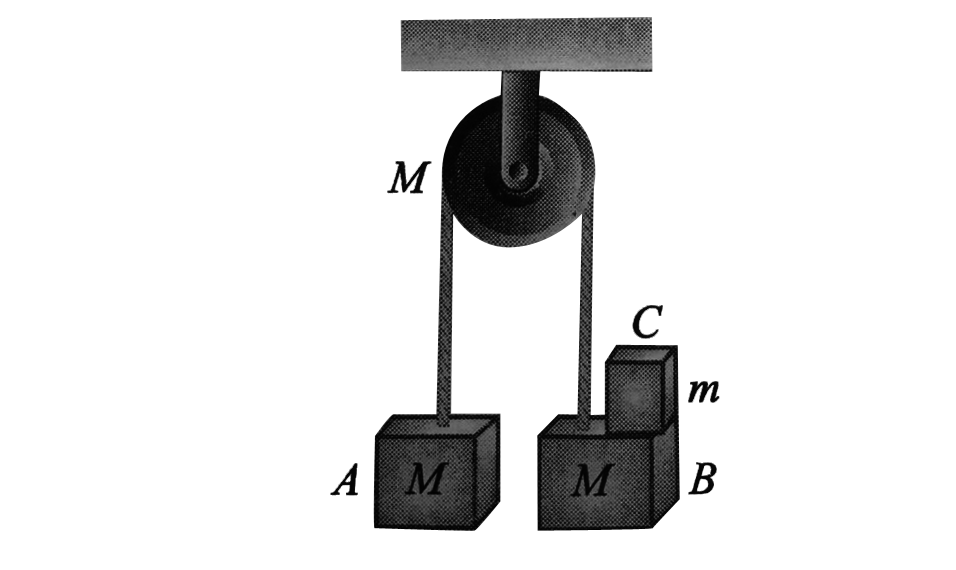
For the following system shown assume that pulley is frictionless, string is massless (m remains on M),
Q. The force on the ceiling isView Solution
For the following system shown assume that pulley is frictionless, string is massless (m remains on M),
Q. The force on the ceiling isView Solution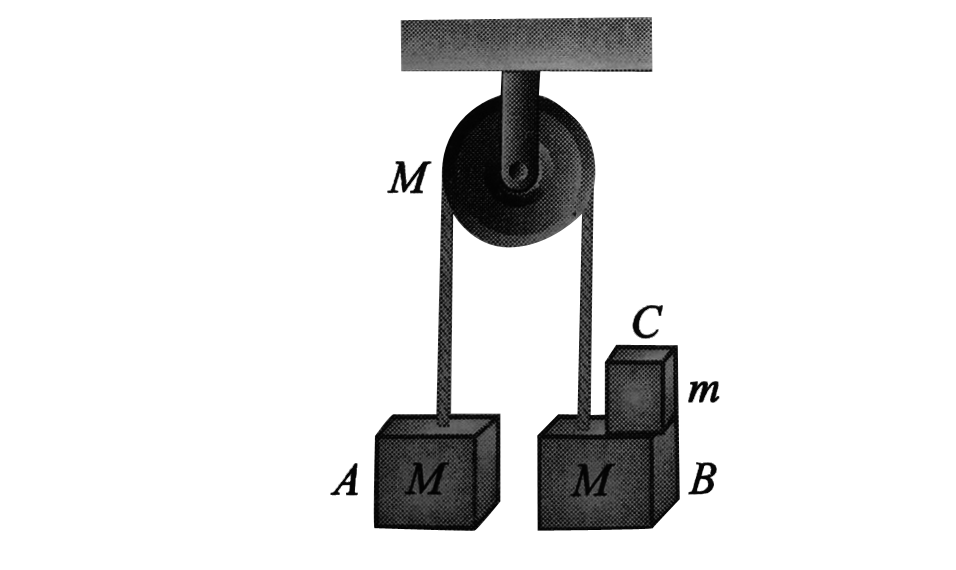
For the following system shown assume that pulley is frictionless, string is massless (m remains on M),
Q. Normal reaction on m is (force on C due to B)View Solution
For the following system shown assume that pulley is frictionless, string is massless (m remains on M),
Q. Normal reaction on m is (force on C due to B)View SolutionIn the arrangement shown, the pulleys and strings are massless. The acceleration of block B is :
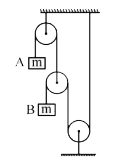 View Solution
View SolutionIn the diagram shown in figure, both pulleys and strings are massless. The acceleration of 2 kg block is
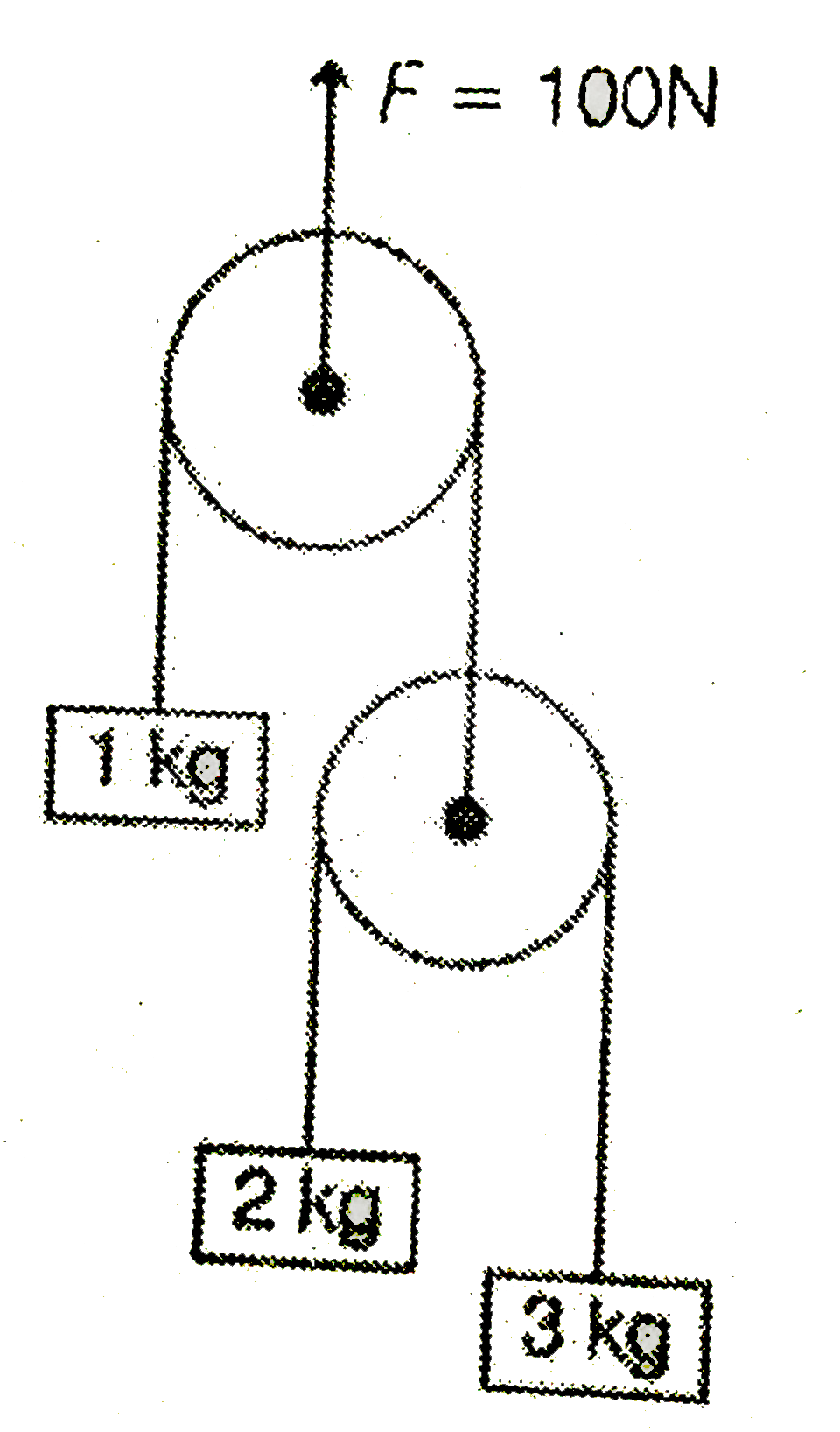 View Solution
View SolutionTwo blocks are connected by a cord passing over a small frictionless pulley and resting on frictionless planes as shown in the figure. The acceleration of the blocks is :
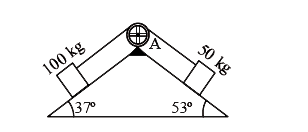 View Solution
View SolutionIn the system shown all the surfaces are frictionless while pulley and string are massless. The mass of block A is 2m and that of block B is m. The acceleration of block B immediately after system is released from rest is
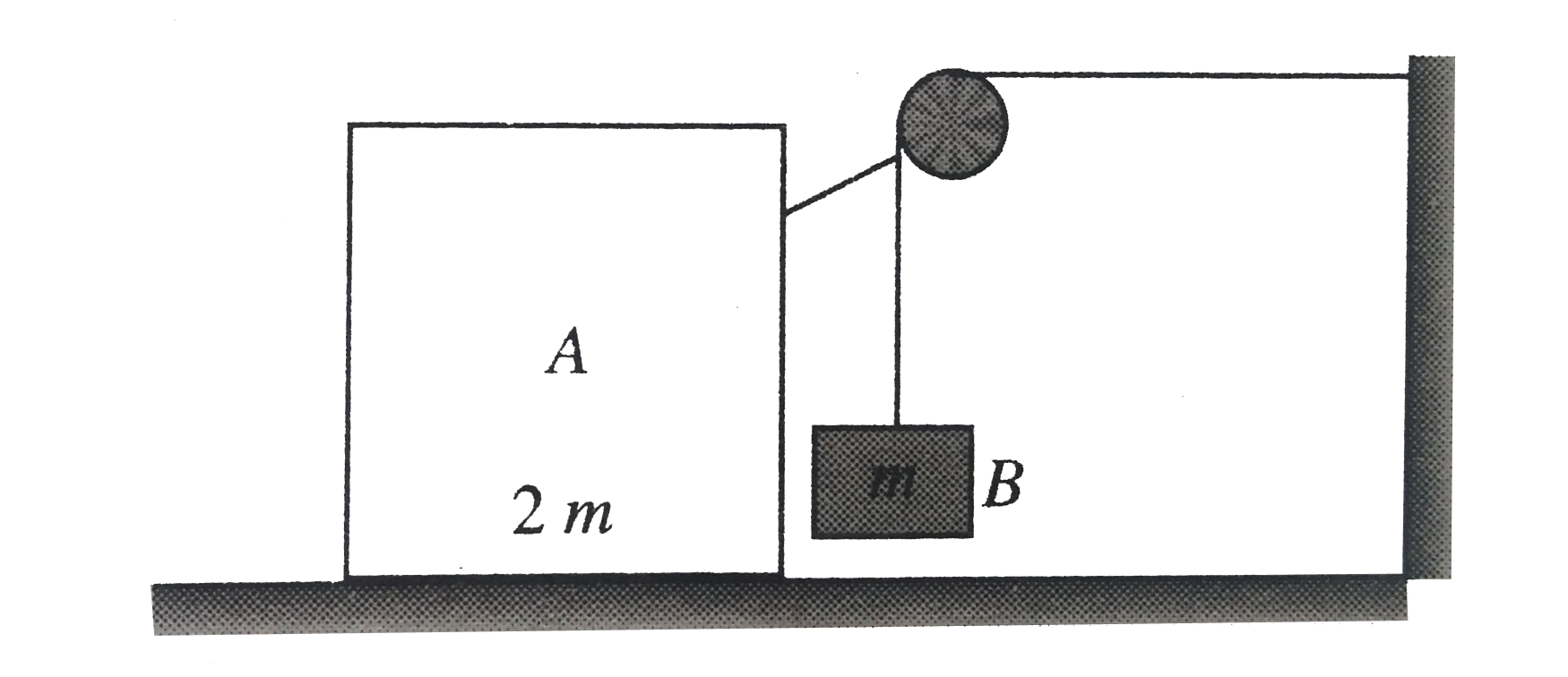 View Solution
View SolutionTwo blocks, each having mass m, are connected with an ideal string through ideal pulleys on a frictionless fixed wedge as shown in the figure. The acceleration of the blocks is
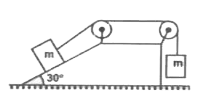 View Solution
View SolutionIn an atwood machine the two blocks have massess 1kg and 3kg. The pulley is massless and frictionless and string is light. The acceleration of the centre of mass (in m/s2) of this system is 0.5x. Find the value of x.
View Solution

